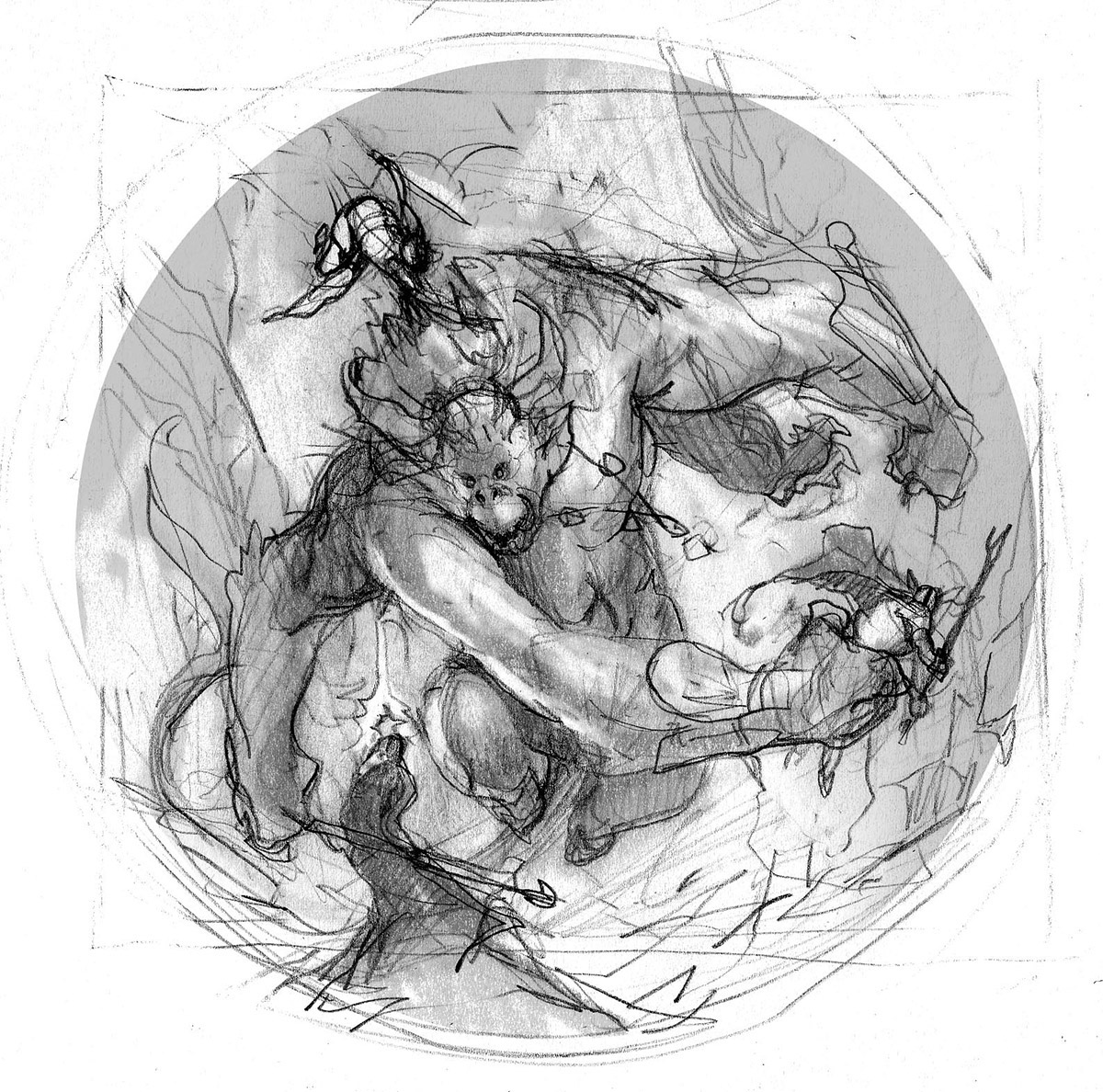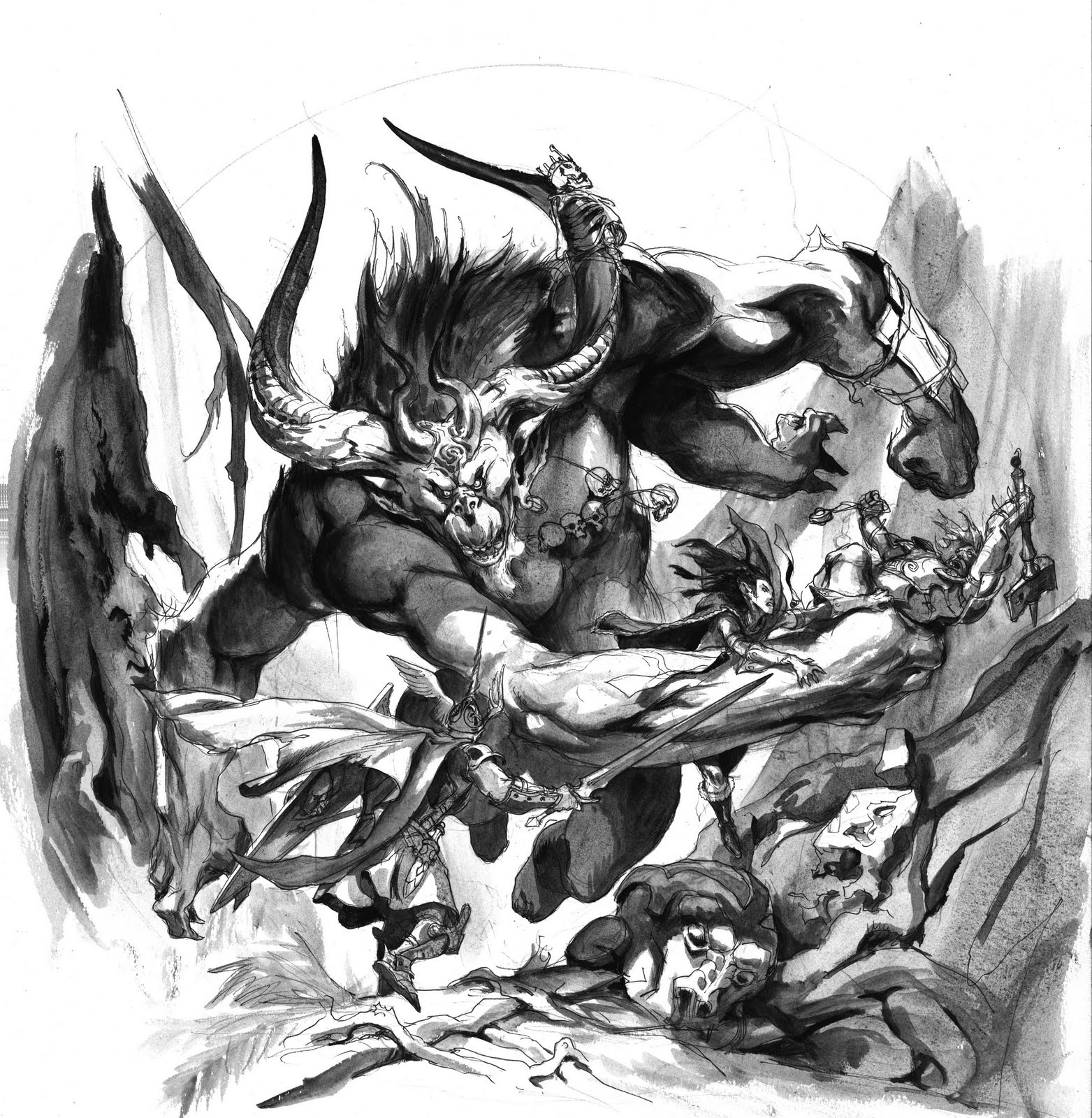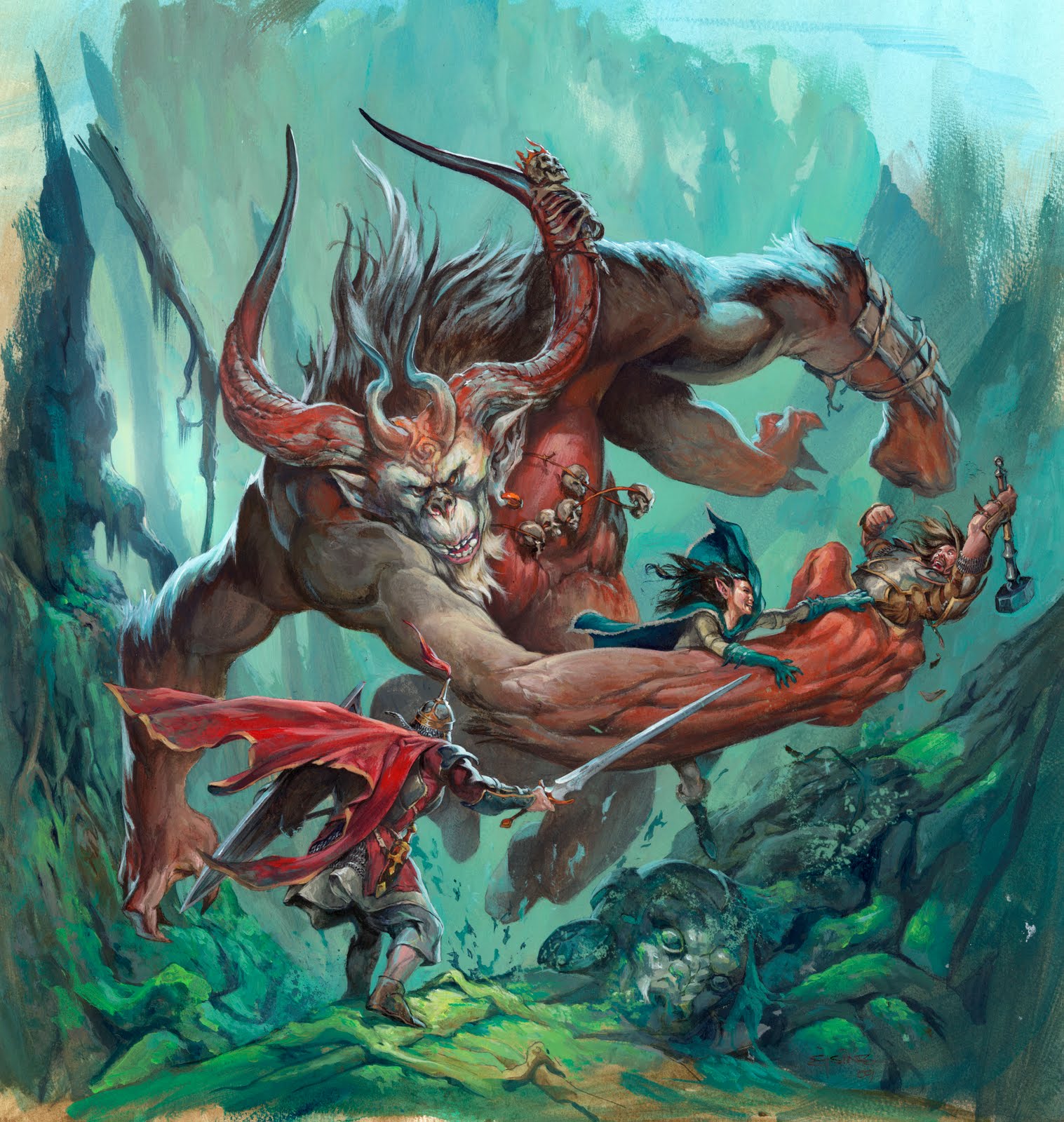This here is a cover I did for Fantasy Flight Games. It is a round image fitting inside a circular frame. That explain the unfinished brushstrokes in the corners.
I remember this piece was a breaking point for me in the way it was executed. Ordinarily I transfer a very loose sketch directly on the board I am going to paint on, and then I tighten everything up to the point of stupidity. What was different this time was, that somehow along the way of doing an enormous load of acrylic paintings over many many years, it finally dawned on me that I could change stuff I didn´t like or that didn´t work by just painting over them. I could actually fix it right away with the brush instead of having to sketch it in with a pencil or a crayon. This was a tremendous leap of faith to me ( I realize while writing this how childish it must sound to those of you who paint digitally and who do this all the time ). I ended up changing the fighter’s hand and weapon right on the board and I was filled with ecstasy over having discovered that I could do this. Right away I went and lowered the foot of the fighter in the front.
These things are so very personal that no one would be able to tell the difference. But to me, it was the beginning of a looser way of painting. When I started painting I remember looking enviously at other painters that were able to do careless and seemingly effortless brushwork. It almost looked like controlled sloppiness ( that is what I aim for now ). What I think finally succeeded was the loosening up and having faith in my self, telling me that I would be able to fix and tighten up stuff that my hand and brush did without much conscience thinking.
10 years ago I asked Paul Bonner how he did those wonderful textures that seemed to be a muddy mix of many colours and dotted brushstrokes. I asked him, stupidly, for a system, and the answer was, at that time, totally nonsense to me. He said: “ I try not to think too much about what I am doing. I let my eye focus wander and think about soccer, letting the brush do the work by itself”.
In my head I was dumbstruck. “ You squint and do not concentrate?” , I was thinking, while nodding my head knowingly. But years later when I finally loosened up and just started dotting colours away trying to capture some random texture those words finally made sense to me.
These days some one third of my painting, all the laying down colours and basic layers are done this way half squinting thinking of my roleplaying campaign or a cunning way of getting one of my studio mates to go down to the street to pick up some cake.
The point is: I am not sure I could have rushed forward faster than I did. Even with Paul telling me the truth I needed to experience it myself and get there at my own tempo. But you CAN force yourself to try.
I have also attached a newer painting with a detail that I really like, and that I feel sums up all the fumbling words above. The light on the snow and the cliffs were done with a very big brush, dancing away on its own with me at the end of it.





Great post Jesper! Love the image…..such beautiful controlled chaos.
Wonderful post! You seem to work effortlessly with acrylics. Your technique with the brush is stunning!
I hope you don't mind me asking a question. How do you deal with acrylic paint darkening as it dries? I find it extremely difficult to control values when I mix a color and then when it dries on the board it is darker.
Jesper your posts rock. Period.
The subtle way you play color opposites against each other is perfect. One color never over powering the others but holding the composition together as a complete image at a glance or an hour long study. The way you lay down your brush strokes just reinforces this idea. These powerful images come across as soft without taking anything away from the subject matter. I don't see a lot of guys who can work a piece with this much finesse, John Howe comes to mind… Wow.
thats a good point, and a very important (and interesting) blog post, jesper.
its not as easy and obvious for us digital painters, either – its much too tempting to start with an elaborate sketch and work with colors “underneath” the sketch for a while until you dare working with opaque colors on top of it only in the last stage of painting out the all too obvious look of linework.
the leap of faith to just put down some big shapes first, and rework/refine them as necessary with whatever it takes for that particular spot in the image, is just as big. my guess is that it really is much more of a mental barrier and trust, ultimately. trust in making it work, in the end, even if that means having to look at some really rough and unrefined splotches of paint for quite a while of the process.
it would be really interesting to see some comparisons of how you tackled things before enlightenment and how you did after – as a kind of guide for faithleaping 😉
What a great post! Thanks for telling this.
I'll bookmark this for inspiration.
@Furman
I am really glad for your comment. The things you mention are so precisely what I aim at and struggle with every day. having someone recognize it and appreciate it is wonderful to me. Somehow, it tells me I am heading in the right direction. Believe me if I say I am going through artistic life crisis every day these days, wondering what the hell I am doing.
Don't stop, you are really, really good!!!! I wish I could paint like you man!
I love the use of red popping out against the greenish background.
I really can't wait to see this painting. I'm drawn to the sheer depth of the mountains and the perspective of the mountains. I would love to see the characters up close. You have such a way with a brush. I feel your insanity when you question yourself on your path but it is so integral for us to grow as artists. Your work is so inspiring and powerful. Thanks for this post… I love to read about the struggles as well as the victories when painting. 😀 <3